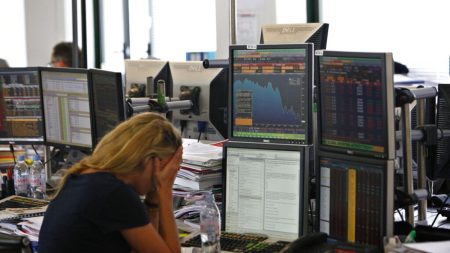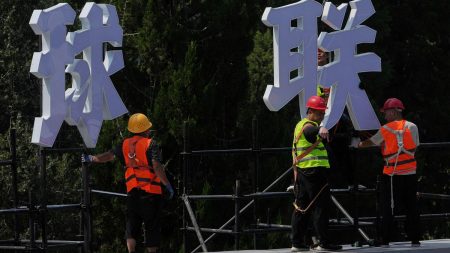The unexpected emergence of DeepSeek, a Chinese AI startup, and its groundbreaking large language model (LLM) named R1, has sent shockwaves through global financial markets, triggering a significant sell-off in US and European tech stocks. DeepSeek’s claim that R1 outperforms leading US AI models while being developed at a fraction of the cost has raised serious questions about the lofty valuations of established tech giants, sparking a wave of investor anxiety and a flight to safer assets. This sudden shift in the competitive landscape highlights the rapid pace of AI development and the potential for disruption from unexpected players.
The market reaction was swift and dramatic. Nvidia, the world’s leading AI chip manufacturer, suffered a historic intraday loss of market capitalization, shedding billions of dollars in value. European tech companies, including ASML, a key supplier of chip manufacturing equipment, also experienced significant declines. The US tech-heavy Nasdaq Composite index tumbled, reflecting the broader downturn in the technology sector. This ripple effect extended to European markets, further exacerbating the global sell-off. The initial market panic also impacted currency markets, with the US dollar weakening against other major currencies as investors sought refuge in less risky assets. Commodities like gold and oil also experienced price drops amidst the widespread market turmoil.
However, the initial market panic subsided somewhat during the subsequent Asian trading session. The US dollar rebounded, leading to a pullback in other currencies. This temporary stabilization suggests that investors are beginning to reassess the situation and digest the implications of DeepSeek’s announcement. Market analysts cautioned against overreacting to the news, emphasizing the need for a more thorough evaluation of DeepSeek’s claims and their potential impact on the AI landscape. While the initial market reaction was driven by fear and uncertainty, a more nuanced analysis is crucial to understand the long-term implications of this development.
DeepSeek’s R1 model, developed for a remarkably low cost and within a short timeframe, reportedly surpasses the performance of established LLMs from industry giants like OpenAI, Google, Anthropic, and Meta, particularly in complex mathematical and coding tasks. This achievement challenges the prevailing narrative of US dominance in the AI field and raises questions about the massive investments made by US companies in AI infrastructure. The fact that DeepSeek utilizes less advanced Nvidia chips, a consequence of US export restrictions on high-end AI chips to China, further underscores the significance of their accomplishment and the potential for innovation even under constrained circumstances.
The emergence of DeepSeek has reignited concerns about a potential escalation of trade tensions between the US and China. Former US President Donald Trump, known for his aggressive trade policies, described DeepSeek’s breakthrough as a “wake-up call” for American tech companies, emphasizing the need for the US to maintain its competitive edge. While expressing confidence in US technological leadership, Trump’s comments underscore the underlying anxieties surrounding China’s growing technological prowess and its potential to challenge US dominance in strategic sectors like artificial intelligence. This renewed focus on competition could further strain US-China relations and potentially lead to new trade barriers or restrictions.
The DeepSeek episode highlights the dynamic and rapidly evolving nature of the AI landscape. While the initial market reaction reflects the potential for disruption posed by emerging players, a more measured assessment is needed to determine the long-term implications. The incident underscores the importance of continuous innovation and the need for established players to adapt to new challenges. It also raises critical questions about the future of AI development, the role of government regulation, and the potential for international collaboration in this transformative field. The unfolding competition in AI is not merely a technological race but also a geopolitical contest with significant implications for global economic and political stability.














